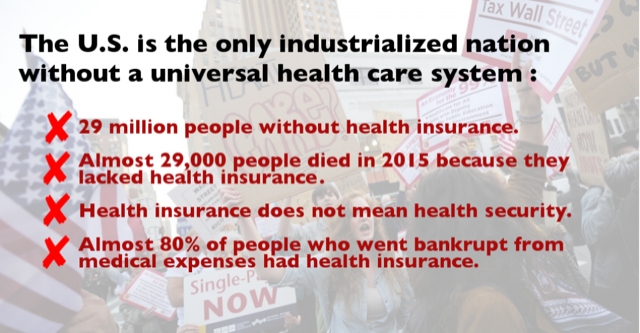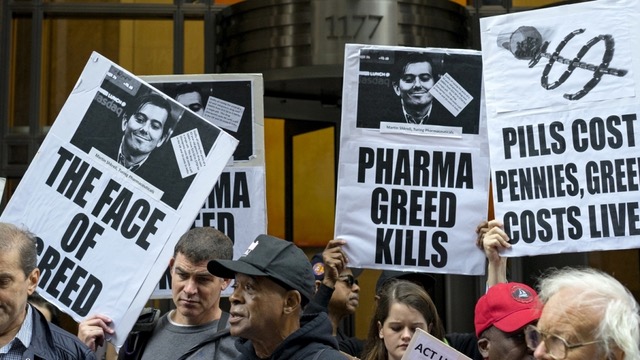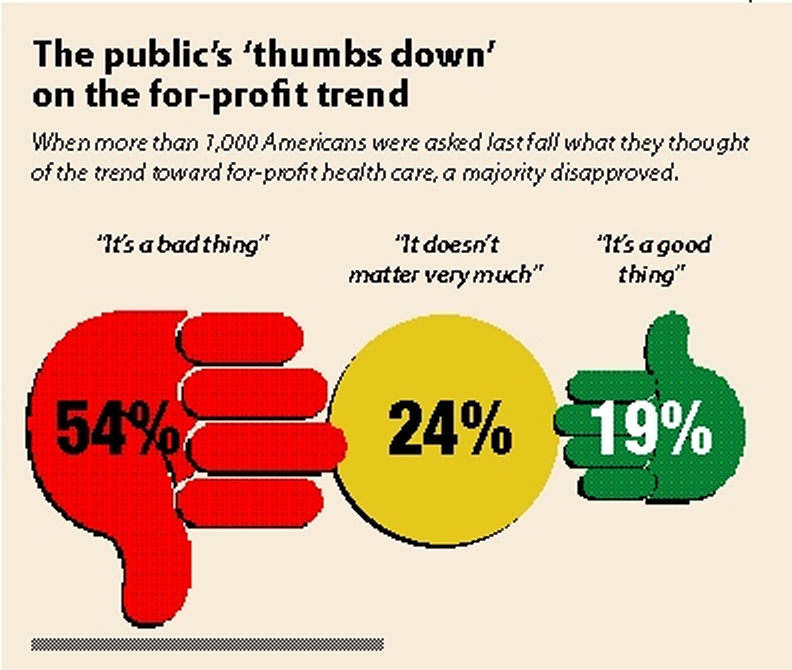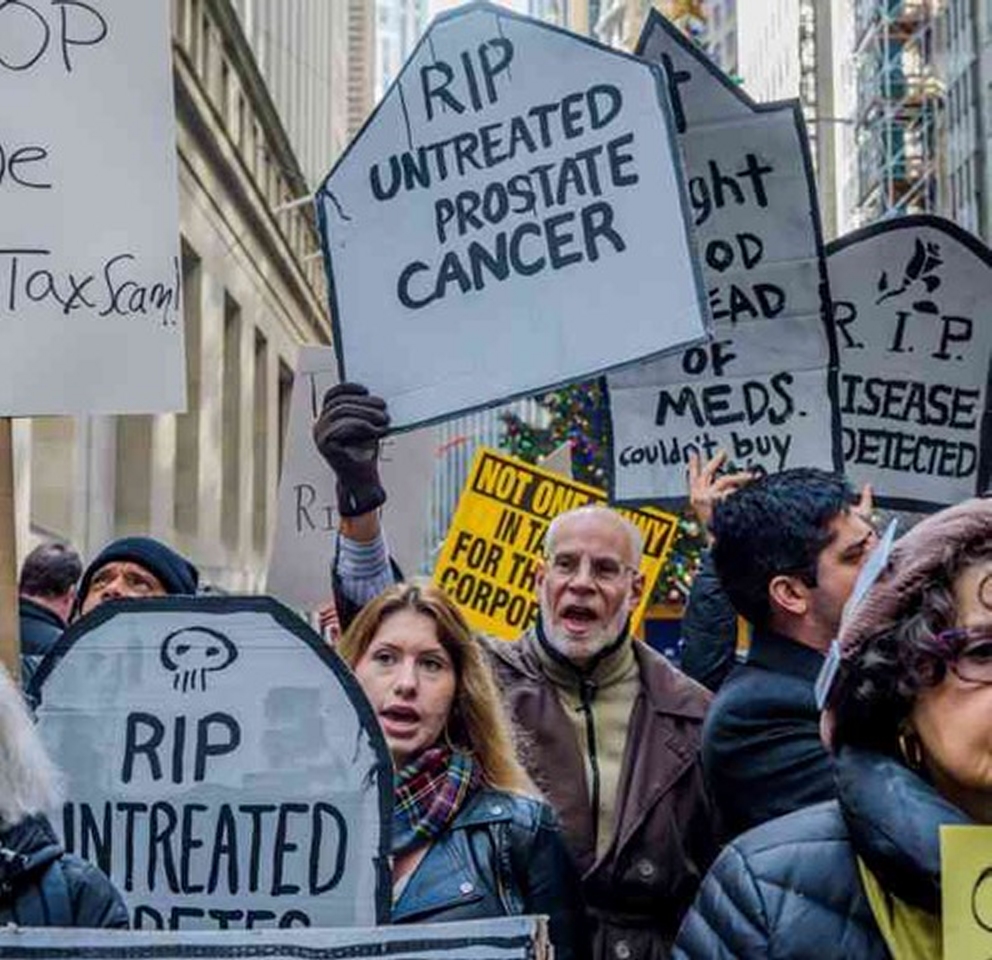
What’s wrong with the for-profit U.S. health care system? If you answered “almost everything,” you’re half right. If you answered everything, you get an A. Let’s start with the basics. US health care statistics are at the bottom of the barrel compared to other industrialized and even most developing nations. Unfortunately, most Americans are so used to being led around by the nose in doctors’ offices, hospitals and a whole raft of other health care facilities, they think what they’re getting is the definition of excellence. Saddled with the most expensive health care system in the world (currently 18% of U.S. GDP), they pay their inflated insurance premiums, absurd co-pays and deductibles convinced they will have a long and healthy life thanks to the best health care system in the world. That’s not how it looks to the rest of the world and many in-house experts. While other countries were experiencing an upsurge in life expectancy in 2017, the U.S. Centers for Disease Control and Prevention reported that U.S. life expectancy dropped for the second year in a row. As U.S. health care experts searched for answers, one study found, “A leading cause is fatal drug overdoses – fueled by the opioid epidemic …just the tip of the iceberg…Deaths from alcoholism and suicides have also increased, what some call deaths of despair.” (lead study author Dr. Steven H. Woolf of Virginia Commonwealth University). Turns out that in addition to the mounting death toll from opioid abuse, suicide (deaths of despair) has become the tenth leading cause of death in the U.S.
In case you still cling to the delusion that U.S. health care is the best the world has to offer, here are a few more teeth-gritting stats. Medical errors at hospitals and other health care facilities are the third leading cause of death in the U.S. That’s right goofs by medical professionals claim over a quarter million lives every year. Fatal mistakes in the best health care system in the world, how could that be? It comes down to the almighty free market where profits trump people every time. In such an environment, the oligarchs who own most of the hospitals, doctors’ practices and other healthcare facilities feel no compunction about hiring unskilled staff willing to work cheap and oftentimes committing deadly errors like administering incorrect medications or the wrong dosage of correct medications and ignoring surgical errors until too late. The plain truth is that universal health care has vastly improved the standard of health care in every country that adopts it. Without single payer universal health care, the U.S. has another tragic notch in its belt. More women die from complications of pregnancy and childbirth than in any other economically advanced country.
Leave it to the politicians to spin blarney that right here in America resides the best (one might say exceptional) health care in the world. The facts say otherwise. According to a report prepared for the National Research Council and the Institute of Medicine, Americans’ health ranks last in a survey of sixteen developed nations. “A lot of people thought it was under-served populations that were driving the statistics – the poor, the uninsured… but the fact that even if you’re fairly well-to-do you still have these problems shatters that myth.” (George Benjamin, American Public Health Association).
Is anyone surprised to learn that Americans die far more often from injuries and homicides than people in countries with universal, single payer healthcare systems or don’t survive preventable deaths like alcohol and substance abuse, and rising midlife crises from diseases of the heart, lungs, digestive system and other organs. In a nation, where gun ownership is considered a right of citizenship, the U.S. has the highest rate of violent death by a stunning margin.
A new wrinkle has further reduced the health care prospects of 56% of American adults who receive health insurance through their employer. For the last several years, average prices for premiums, co-pays and deductibles are taking a large chunk out of workers’ paychecks — on average ten to twelve percent of their annual salary. The bottom line: more and more workers and their families are critically under-insured and in many cases one serious illness away from financial meltdown.

As prices rise in all sectors of the healthcare industry, the drug companies take advantage of the regulatory-free environment of for-profit medicine to make a killing (pun intended).
| He was six years old when he developed a rare form of blindness. To provide sight-restoring medicine, the drug company demanded $425,000 per eye, a total of $850,000. He was a lucky little boy. His parents’ employer-provided insurance paid for the treatment with no copay, although his parents were required to pay the $6,000 deductible. Within a few hours, his sight was restored. The hope is that this treatment will last his whole life. But no one knows for sure. The big question. If the treatment needs to be repeated will the insurer once again pick up the tab? |
Is there a drug-taking adult in the U.S. astonished to learn that according to a congressional report “the prices of many of the most popular drugs increased at nearly ten times the cost of inflation from 2012-2017.” More to the point, drug costs began exploding in 1992 when Congress enacted the Prescription Drug User Fee law that required drug companies to pay most (currently 75%) of the cost of the budget for reviewing drugs. “Instead of a regulator and a regulated industry, we now have a partnership…tilt[ing] the agency [FDA] away from a public health perspective to an industry friendly perspective.” (Dr. Michael Carome, Public Citizen)
| He was a college student-athlete who loved to run. Suddenly he started experiencing muscle weakness and within three months was in a wheel chair. He was diagnosed with a rare auto-immune disease treatable with a drug made by a small drug company. Since it was inexpensive to make, the company provided it to patients free of charge. That changed when the company was purchased by Catalyst, a big drug company. After making some minor alterations in the formula, the FDA allowed them to charge big bucks for the drug that was essentially unchanged from the free version. When the young man took the drug, he was doing cartwheels in an hour. The price to give him back his life—$500,000. He was also one of the lucky ones. His dad’s employment insurance covered the cost. His mother was far from grateful— “Catalyst took advantage of my son’s illness to make millions from a drug it didn’t discover.” |
Be careful what you wish for replies Pharma, the drug company lobby — “[Any change in the status quo risks] “needless delays in drug review and approval that lead to longer development times, missed opportunities, higher drug development costs and delays in treatments reaching patients.” Does anybody have a bridge they want to sell?

Despite missed opportunities to set the ship right, a solution to the rapacious business model of the drug companies exists. Sadly, it’s not government regulators who are demanding change, but activists for the people. “These voters [working class whites] distrust the way [drug companies] bend the rules to their will so that they can earn more profits while hurting workers and consumers…They are buying their laws basically.” (Stan Greenberg, democratic pollster).
Lest you think drug companies restrict their thievery to those who depend upon private insurance, consider a 2017 government report finding that drug manufacturers and distributors charge Medicare, the federal health insurance program for seniors, double the prices they charge for the same drugs in other countries. In every advanced economy, other than the U.S., drug prices are put under the microscope and negotiations drive drug prices down. More proof that government oversight keeps even drug companies honest. In the U.S. Medicare is forbidden by law to negotiate the prices of drugs.
| “Poll after poll shows that lowering drug prices is a top concern for the American people…maintaining access to needed drugs is equally important…Negotiating…accomplishes both goals…without putting patients’ access in Pharma’s greedy cross-hairs.” (Alex Lawson, Social Security Works) |
Recently Senator Bernie Sanders and Representative Ro Khanna introduced in Congress The Prescription Drug Price Relief Act that would alter the prescription drug landscape in important ways. According to Senator Sanders, the bill is meant to “peg the price of prescription drugs in the United States to the median price in five major countries Canada, the United Kingdom, France, Germany and Japan,” as well as “direct the Secretary of Health and Human Services to negotiate lower prices for prescription drugs under Medicare. A companion measure The Affordable and Safe Prescription Drug Importation Act would allow Americans “to import safe, low-cost medicines from Canada and other major countries. Will they pass? Most observers doubt it. But its sponsors hope it will send a message to the drug industry that the days of exorbitant drug price inflation are on their way out. Rep. Elijah Cummings (D-MD) chairman of the House Committee on Oversight and Reform, was optimistic “there is strong bi-partisan consensus that we must do something to rein our out-of-control price increases.” Haven’t we heard this song before?
Ask Nancy Pelosi, democratic Speaker of the House and worth $16 million in her own right, how she feels about the unbridled greed of the drug companies. She is hyping her own bill to “fix” drug costs. Like the phony liberal she is, her bill is stuffed with back door escape clauses. For openers, it would only apply to a select group of high cost drugs, instead of to all prescription meds, and would replace negotiations over drug prices with arbitration, a voluntary and nonbinding system allowing drug companies to opt out without penalty. Sounds like a sweetheart deal for Pharma.

There you have it. A corrupt pay-to-play health care system that leaves in its wake hundreds of thousands of untreated patients, millions of uninsured and under-insured people, and over one-half million bankruptcies every year linked to illness and medical bills. Even for an exceptional nation that’s a mighty big exception to the general rule that exists in every other advanced country on the planet —that citizens have a right to as much health care as they need without worrying about the cost.
How does the exceptional nation stack up to the rest of the developed world? Ask young American men, who for the last thirty years have had the lowest chance of surviving to age 50 or the infants who have the best chance of dying before age five. Americans have the exceptional opportunity to die more often from heart or lung disease, obesity or diabetes. Isn’t it time to point the finger of blame where it belongs —at the heart of a corporate scam to make as much money as possible while ordinary Americans pay the price in untreated illness and premature death. It’s time to start fighting for a better answer.
1,175 total views, 1 views today
